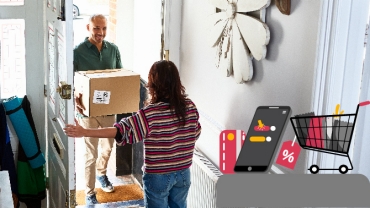
The month of December is traditionally a period in which a lot of retailers in the Netherlands generate a significant part of their annual turnover. Moreover, consumer spending on Sinterklaas and Christmas has been supplemented in recent years by Black Friday and Cyber Monday. What are consumers planning to spend on this year’s December holidays? PwC partnered with retail experts Q&A at the start of November to survey circa 1,700 consumers and the key results are summarised below. Given the timing of the survey, these results were not impacted by any effects from the COVID-19 measures recently introduced in the Netherlands.
Santa spends more than Sinterklaas

Christmas is easily December’s most celebrated holiday (85 percent) among respondents, and the most lucrative one for retailers. Although only about half (53 percent) of those surveyed celebrate Sinterklaas, the festivities almost always include presents: 91 percent receive gifts from Sinterklaas, while Santa only brings presents to 64 percent of the respondents. However, with Christmas being more popular, Santa has more presents to deliver than his counterpart: 54 percent of all participants buy presents for Christmas, versus 48 percent for Sinterklaas.
“Because on average a third more is spend on presents from Santa compared to those from Sinterklaas (153 euros versus 116 euros), Christmas generally generates a higher turnover from presents,” says Milo Hartendorf, retail and consumer markets specialist at PwC.
Although Santa seems to be the bigger spender, the Sinterklaas festivities can still make an important contribution to the sales peak in the last quarter of the year. This is especially the case when retailers focus on the age categories between 18 and 44 years old, 72 percent of which celebrate Sinterklaas. This portion drops to about 40 percent for higher age groups. Despite the growing popularity of online shopping, respondents still expect to make half of their purchases for both December events in physical shops.

Women more often responsible for presents shopping

Seventy percent of respondents expect to spend approximately the same amount on Christmas and Sinterklaas presents this year as they did last year - 20 percent expect to spend more while 10 percent think they will spend less. Among multi-person households, more than three quarters of the female respondents (78 percent) say they are the ones responsible for buying the presents, while only a quarter of the men indicate this (24 percent).
At the same time, a difference in perception is revealed: half of the male respondents think they are just as busy with buying presents as women, while only 20 percent of the female respondents perceive such a balanced division of tasks. “it seems to make sense for retailers to have sufficient focus on the female buyer - even with regard to products for men,” Hartendorf advises.
One third buys their presents during ‘Black Friday’ en ‘Cyber Monday’

Thirty-seven percent of respondents buy their presents for December on Black Friday and Cyber Monday, when they spend nearly half of their budget for Christmas and Sinterklaas (46 percent). The shops most often mentioned by respondents in terms of special discounts are Bol.com, MediaMarkt and Coolblue.
Men clearly use the discount days more often than women to buy their December presents (45 percent versus 29 percent). There is also a big difference between age groups: young adults buy their gifts on Black Friday and Cyber Monday more often than older people (see illustration). “This may be due to the fact that these consumer events are more heavily marketed on social media,” explains Hartendorf. “There still seems to be an opportunity here for retailers when they manage to reach older target groups.”
A majority anticipates potential supply issues
More than three quarters of respondents (78 percent) are aware of possible delivery issues due to bottlenecks in the supply chain. For a majority (64 percent), this is a reason to make their purchases for December earlier than usual. Older people are more aware of the stock issues than younger people (80 versus 65 percent), but less inclined to bring forward their purchases than younger people (54 versus 73 percent). It is possible that younger people have more experience with the consequences of delivery issues as they shop online more often.
More than half of the respondents (78 percent) expect products to be more expensive than last year, with older people being more pessimistic than younger ones (88 versus 63 percent). This expectation is partly based on shortages in raw materials and the delivery issues, while general inflation and COVID-19 are also mentioned as reasons for products being more expensive.

This research is in collaboration with retail experts Q&A.
O Christmas tree...

Contact us



















